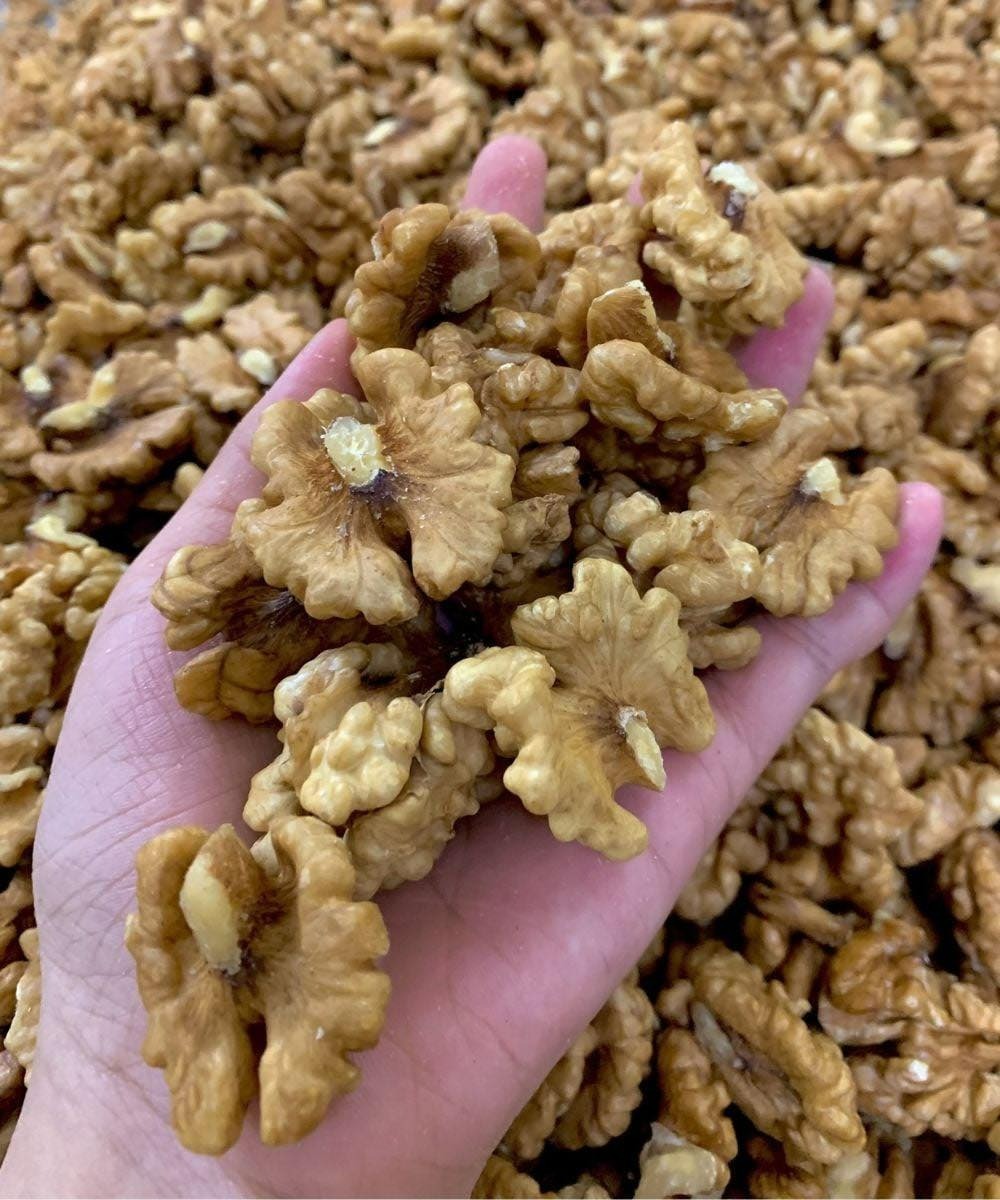Your brain runs on healthy fats — and walnuts deliver.
Studies show:
- Older adults who eat walnuts daily score better on memory, focus, and processing speed
- Animal studies suggest reduced plaque buildup linked to Alzheimer’s
- Improved mood and reduced depression symptoms in some trials
🧠 The combination of omega-3s, polyphenols, and vitamin E helps protect neurons and reduce inflammation.
💡 Not a cure — but a smart dietary ally for long-term brain health.
2. Promotes Heart Health
Heart disease remains the #1 cause of death worldwide — and walnuts help lower key risk factors.
Clinical trials (like the PREDIMED study) found:
|
Benefit
|
Effect
|
|---|---|
|
✅ Lower LDL (“bad”) cholesterol
|
By up to 10%
|
|
✅ Reduced blood pressure
|
Mild but consistent improvements
|
|
✅ Improved artery function
|
Better endothelial health
|
|
✅ Lower inflammation markers
|
CRP, IL-6, TNF-alpha
|
❤️ Eating walnuts regularly is linked to a 14–50% lower risk of cardiovascular events, according to meta-analyses.
3. Feeds a Healthy Gut Microbiome
Walnut skins are rich in tannins and polyphenols — compounds most people don’t digest directly… but your gut bacteria love.
Research shows:
- Daily walnut consumption increases beneficial bacteria like Lactobacillus and Bifidobacterium
- Reduces gut inflammation
- May improve gut barrier integrity (helpful for leaky gut concerns)
🍽️ A healthy microbiome supports immunity, mood, and metabolism — making walnuts a true whole-body food.
4. May Help Manage Weight & Appetite
Despite being calorie-dense, walnuts don’t lead to weight gain when eaten in moderation.
Why?
- High fiber and protein promote fullness
- Chewing whole nuts slows eating pace
- Some calories remain trapped in cell walls — not fully absorbed
📊 One large study found women who ate nuts (especially walnuts) gained less weight over time than those who didn’t.
✅ Ideal portion: 1 oz per day — about 14 halves.
5. Supports Blood Sugar Balance
For people managing insulin resistance or type 2 diabetes:
- Walnuts improve insulin sensitivity
- Reduce post-meal glucose spikes
- Help maintain HbA1c levels
🥗 Pair with complex carbs (like oats or fruit) for stable energy.
🍽️ How to Eat Walnuts Safely & Effectively
Best Ways to Enjoy:
|
Method
|
Tip
|
|---|---|
|
✅ Raw or lightly toasted
|
Preserves delicate oils
|
|
✅ On oatmeal or yogurt
|
Adds crunch and nutrition
|
|
✅ In salads
|
Great with apples, beets, goat cheese
|
|
✅ Baked into muffins or breads
|
Replace eggs with ground walnuts (binding effect)
|
|
✅ As walnut butter
|
Choose unsweetened versions
|
⚠️ Store in the fridge or freezer — their high polyunsaturated fat makes them prone to rancidity.
⚠️ Important Safety Notes
|
Rule
|
Why It Matters
|
|---|---|
|
❗ Moderation is key
|
More than 1–1.5 oz/day may displace other foods or add excess calories
|
|
❗ Avoid salted or candied varieties
|
Added sugar/sodium reduces benefits
|
|
❗ Allergies exist
|
Tree nut allergies can be severe — do not consume if allergic
|
|
❗ Not for infants
|
Choking hazard — serve ground or as oil after age 1+
|
🚫 Never replace medical treatment with walnuts — they support health, but don’t cure disease.
❌ Debunking the Myths
|
Myth
|
Truth
|
|---|---|
|
❌ “Walnuts cure Alzheimer’s”
|
False — supportive, not curative
|
|
❌ “Eating more = faster brain gains”
|
Dangerous myth — excessive intake offers no extra benefit
|
|
❌ “They detox your body”
|
Misleading — your liver detoxifies; walnuts support overall health
|
|
❌ “Only raw walnuts work”
|
No — light roasting doesn’t destroy nutrients significantly
|
Final Thoughts
You don’t need exotic supplements to fuel your body.
But you can reach for the jar — knowing that something so simple holds centuries of wisdom and modern science alike.
So next time you’re snacking… pause.
Crack open a shell. Chew slowly. Appreciate the crunch.
Because real strength isn’t flashy. It’s quiet. And sometimes, it starts with one tiny nut — and one deep breath.
And that kind of care? It grows deeper than any trend ever could.
ADVERTISEMENT

